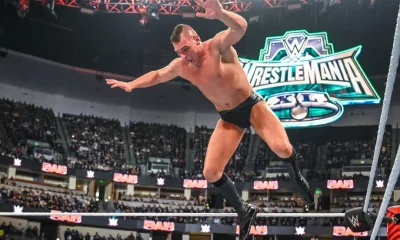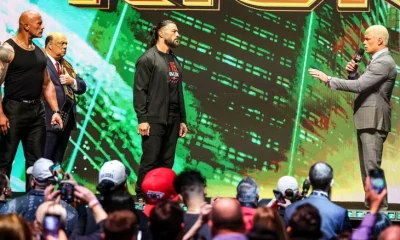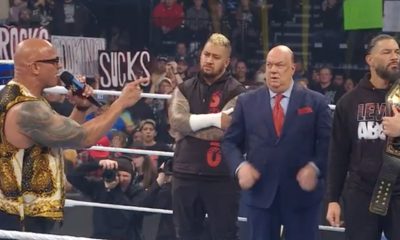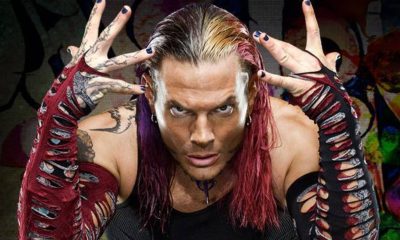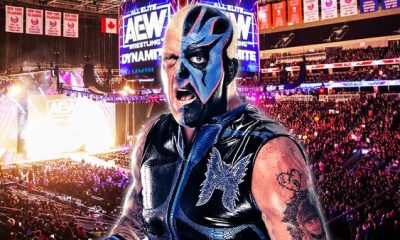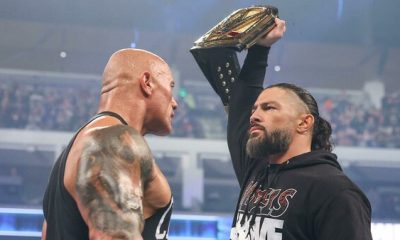Sport
12 best tag teams in the history of WWE
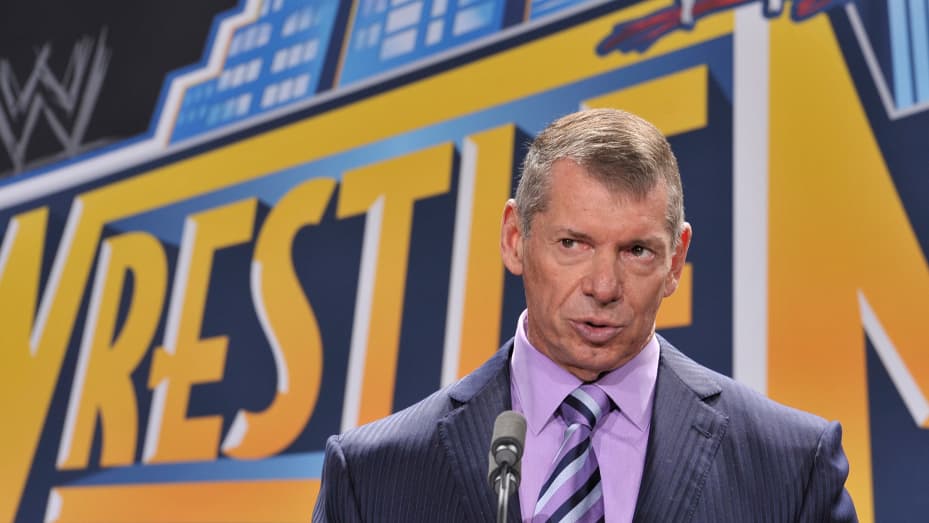
There’s a certain magic to tag team wrestling. With more people in a match, people can take breaks, which means matches can be faster paced. The exciting world of double-team moves and finishers opens up. Plus, it’s so much easier to tell those classic pro wrestling stories of friendship and betrayal when you’re never working alone. Yet WWE’s history with tag teams is mixed. There have been times when the belts have been a complete afterthought. Yet there have also been times where the division was talent-packed, to the point where the first two Survivor Series events were actually able to have 10 on 10 match filled entirely by regular tag acts.
A ton of great tag teams have graced WWE programming. They’ve been the launching pad for future singles stars or on the flip side, have been opportunities to form exciting new partnerships between already established ones. They’ve thrilled us as they established the TLC match gimmick and broken our hearts when we’ve seen them suffer their often painful breakups. Even with some lean years for the division here and there, WWE has been home to many all-time duos and we’re excited to show you the 12 best.
One of WWE’s greatest ever examples of that classic “young cool partying dudes” tag archetype, Shawn Michaels and Marty Jannetty were one of the best working tag teams of the ’80s. In many ways they, felt like WWE’s version of an all-time legendary tag team, The Rock ‘n’ Roll Express. The Rockers frequently made the most of whatever situation they were in, having great matches when matched up with fellow top workers like The Brainbusters, but also pulling out better than expected bouts with lesser teams. In particular, their match with the Orient Express at the 1991 Royal Rumble is remembered as one of the great WWE PPV opening matches of the decade.
Due in part to a bizarre mishap, The Rockers never got a WWE Tag Title run. Winning the titles against The Hart Foundation in a match where the top rope broke, the WWE decided to not air the match and pretend it never happened, reverting the championship back to the Foundation. A longer run with the promotion may have seen them get that official run, but in 1992 the team broke up with a memorable angle that featured Michaels turning heel and putting Janetty through a window on Brutus Beefcake’s “Barbershop” talk segment. It’s one of the most legendary tag breakup angles WWE has ever done — simply say “Barbershop window” to a certain generation of fans, and they’ll know exactly what you mean.
Dynamite Kid was one of the greatest workers of his generation, a state-of-the-art performer whose matches with Tiger Mask inspired many a future name. Davey Boy Smith was a moldable athlete who had size and developed an incredible physique. Together you had The British Bulldogs, a truly special tag team for its time. Their WWE feud with fellow Stampede Wrestling alumni The Hart Foundation was one the defining tag rivalries of the ’80s, one that would span a few years and be featured at WrestleMania III.
The Bulldogs only held the WWE Tag Titles one time, defeating The Dream Team, consisting of Brutus Beefcake and Greg Valentine, at WrestleMania II. They held the belts a couple of months shy of a year before losing the titles to The Hart Foundation. Unfortunately, the end of that run saw Dynamite severely injure his back, years of a hard bumping, hard living lifestyle catching up to him. The team would continue for some time but Dynamite would never be the same. The duo would eventually be given an actual bulldog named Matilda as a mascot, who’d be part of an angle when she was “dognapped” by the evil Bobby Heenan. Given that, it’s probably not a surprise the team left WWE for other promotions in 1988.
The Hart Foundation
Sometimes the best tag teams are polar opposites, and the Hart Foundation are a prime example. Apart from being real life in-laws with the same four letters in their last names, Bret Hart and Jim Neidhart couldn’t have been more different. Bret was a skilled technical wrestler with a standard wrestler physique, a little reserved as he was still finding his voice outside of the ring. Jim was a bulky tank of a man and overflowing with personality, that maniac cackle etching itself into fans’ memories. Each man had what the other needed. “The Hitman” could carry the matches, “The Anvil” could carry the promos — along with, at times, manager Jimmy Hart, of no relation to either.
The Foundation had a six-year run in WWE, from ’85 to ’91, and it was enough to cement their place as one of the greatest tag teams the company ever employed. Working in an era with less frequent title changes, they only held tag team gold two times, but in days spent as champions they actually rank high on the all-time list, an impressive 483 days. Various Hart family members have tried to recreate the team over the years, most notably Neidhart himself with Bret’s brother Owen as The New Foundation, but no attempt has ever been able to match their work in the ring, or rival their legacy outside of it.
The Mega Powers
How can a team that only wrestled a handful of times and lasted less than a year make this list? Start with a combination of WWE’s two biggest stars of their day, Hulk Hogan and Randy Savage. Now make them the center of a year-long saga, one of the best storylines in company history, one that sees them win the main event of the first SummerSlam over the Mega Bucks team of Ted DiBiase and Andre the Giant. Have it all end in an incredibly dramatic blowup over Savage’s manager, Elizabeth. Then blow it all off in a singles match at the huge WrestleMania V PPV.
When the team finally had their singles match at Mania V, the tagline wasn’t “Hogan vs. Savage” but “The Mega Powers Explode,” a testament to the name value the team had created in a short period of time. Tons of major single stars have been put together into short-term makeshift tag teams for the sole purpose of building a match when they fall apart, but none may have been as successful, or memorable, as the Mega Powers. Whenever you see thrown-together star pairings, the Mega Powers are what they’re hoping to emulate. Heck, Savage and Hogan even tried to emulate it themselves, reuniting briefly in WCW in the mid-’90s as “The Monster Maniacs.”
Demolition
Sometimes a knockoff of an original can be pretty good in itself. From their studded ring attire, to their facepaint, to their “Mad Max”-esque names of “Ax” and “Smash,” everything about Demolition seemed designed to allow Vince McMahon to create his own Road Warriors before he was able to sign the original. Yet in terms of just their WWE careers, Demolition were not just more successful than the Warriors, but more successful than any other WWE team of the ’80s. They held the tag titles on three separate occasions, more reigns than any other team of their era, and held them for a combined 698 days, one of the longest total times as tag champs in company history.
Demolition may not be remembered as workers in the same regard as many of the other teams on this list, but they were good serviceable wrestlers. Their gimmick may have been derivative, but it was memorable. Their absolute dominance of the division for a period of time is something special, though, which puts them in the record books and on this list.
The Legion of Doom
Sometimes a knockoff of an original can be pretty good in itself. From their studded ring attire, to their facepaint, to their “Mad Max”-esque names of “Ax” and “Smash,” everything about Demolition seemed designed to allow Vince McMahon to create his own Road Warriors before he was able to sign the original. Yet in terms of just their WWE careers, Demolition were not just more successful than the Warriors, but more successful than any other WWE team of the ’80s. They held the tag titles on three separate occasions, more reigns than any other team of their era, and held them for a combined 698 days, one of the longest total times as tag champs in company history.
Demolition may not be remembered as workers in the same regard as many of the other teams on this list, but they were good serviceable wrestlers. Their gimmick may have been derivative, but it was memorable. Their absolute dominance of the division for a period of time is something special, though, which puts them in the record books and on this list.
The Legion of Doom
It says something about how great this team was that even with some pretty poor handling by the WWE, it still feels like they deserve a place on this list. Before they came to the WWE as the Legion of Doom, Hawk and Animal had long established themselves as the hottest tag team of the ’80s as the Road Warriors. With a look and name inspired by the “Mad Max” films, the Roadies were the picture of intimidation with their face paint, mohawks, spiked shoulder pads and jacked-up physiques. Their usually short destructions of opponents were a big draw, and the package was completed with Hawk’s crazy, off-the-wall promos.
Upon signing with WWE in 1990, things first looked good. The team was forced to change its name but otherwise the gimmick was kept intact initially, and they soon became tag team champions. Yet their run would end with them dissatisfied just two years later, Hawk quitting the company. It’s not hard to see why as WWE had foisted having a literal puppet mascot named Rocco onto them, one of the great “What were they thinking?” moments of the era. Two more runs in WWE would follow in the late ’90s and 2003. The former was a mixed bag that saw a brief regaining of the tag belts and a failed reimagining as LOD 2000. The latter is best forgotten, built around a tasteless angle around Hawk’s real-life substance abuse issues.
Despite it all, it was a rush to see one of the great tag teams in history in the biggest promotion in the world, and even if we only saw glimmers there of them at their best. That’s enough to hold a place in many WWE fans’ memories to this day.
The New Age Outlaws
One of the most popular undercard acts of the Attitude Era, the New Age Outlaws are the perfect example of how a good tag team can save careers. At the time of their formation, both Billy Gunn and Road Dogg were struggling to gain traction, both in gimmicks that saw them emulate bigger stars. Gunn was the Honky Tonk Man protégé “Rockabilly” and Dogg was Jeff Jarrett copycat “The Real Double J” Jesse James. Rebranding themselves as the New Age Outlaws, the team was quickly pushed to the top, winning the tag titles from the Legion of Doom.
Where they really hit their stride was when they became members of the Shawn Michaels and HHH’s D-Generation X stable. Leaning into the immature schoolyard humor the stable was becoming known for, they were the perfect additions to flesh the group out. Soon their patterned pre-match mic work was becoming one of the more beloved crowd participation spots of shows. The Outlaws’ main run was just a few years, and in the ring, the team was just decent, but their legacy is being a very over partnership in the biggest promotion in the world during the hottest time period in wrestling history.
Edge and Christian
While both men went on to successful singles careers, it was their tag team run that really put Edge and Christian on the map. Starting off as members of Gangrel’s stable, The Brood, the two soon far surpassed their leader. A feud with the Hardys raised their stardom to a new level, in particular a ladder match at No Mercy 1999. With the services of Terri Runnels and $100,000 at stake, the four men put on a show stealer that started the trend of tag team ladder matches that would expand over time into the TLC gimmick. Edge and Christian lost that match, but they shared in the career boost that it gave all four wrestlers.
Over time, their tag persona incorporated more and more humor, until their out of the ring segments started to become some of the funniest wrestling vignettes in history. Their friendship with Kurt Angle was a particular highlight, their previously hidden comedic potential blossoming right next to Kurt’s. Whether they were using a chicken suit to try to lose weight, playing their own theme music on a kazoo, or just talking about how sodas rule, Edge and Christian’s segments were like nothing else on WWE TV. They produced great matches and won titles plenty of times, but it’s the laughs they gave us that truly set them apart from their contemporaries.
The Hardy Boyz
Brothers Jeff and Matt Hardy brought true excitement to the tag ranks during the Attitude Era and beyond. While they did not invent the ladder match, they helped popularize it as a fast-paced daredevil stunt show that WWE would go back to again and again ever since. While the Hardys didn’t do it alone, when you think of that era and you think of the ladder matches and/or the TLC matches, chances the team you’re thinking of is them. They were the daredevils, the ones you expected, or maybe sometimes even worried, were going to do something insane, and usually you were right. Jeff always seemed eager to find a new height he could jump from and Matt with his flying legdrops wasn’t too far behind.
The Hardys weren’t just about ladders, though. A legitimately great team bell to bell, the brothers racked up many titles in WWE as both a team and separately in singles. Matt proved himself to be a master of reinvention, gimmick-wise, and Jeff at his peak was a main event level singles star. Still, it says a ton about their success as a team that despite all they’ve done separately, they will still probably be best remembered for their work together. Unlike many teams that break up and then never again work as a dedicated unit on a regular basis, the Hardys kept coming back to each other in a laundry list of promotions, and fans always seem happy to see it.
The Dudley Boyz
Jumping from ECW to WWE in 1999, the Dudleys transitioned better than most would’ve expected. Bubba Ray was able to excise the blistering vulgar promos he had become known for and he and D-Von were able to craft a slightly softer version of their ECW gimmick. “D-Von, get the tables” became a crowd-pleasing mid-match catchphrase, as did the “Wassup” flying headbutt to opponents’ nether regions. Breaking tables became their calling card, and they ended up working their share of gimmick matches where you had to do just that in order to win.
The kayfabe half-brothers were a great foil to the other two top tag teams of their generation, the Hardys and Edge and Christian. Their size added an interesting dynamic to their three-way matches, and Bubba was adept at playing a heel bully where the situation called for it. In addition, their tag team finisher — the Dudley Death Drop (or 3D) — might just be one of the coolest tag finishes in history. One of the acts most successful at jumping from the world of the hardcore to the world of sports entertainment, the Dudleys were inducted into the WWE Hall of Fame in 2018.
The New Day
When Kofi Kingston, Xavier Woods, and Big E were thrown together as the New Day, it was the best thing that could’ve happened to them, but it didn’t seem that way at first. Originally pushed as a sugary sweet babyface act, the crowd very quickly turned on them. The three, rather than completely changing gimmicks, leaned into it, turning it into an over-the-top heel act that became a regular highlight of WWE programming. In many ways, the three had followed the Rock’s early career trajectory: an initial bland and poorly received babyface run that turned into a hugely successful heel one that turned them into legitimate babyfaces with the fans.
The rare Freebird-style tag act that would regularly present different two-person combinations of their three members, each of the trio brought enough talent that any combination produced good results. Their list of quality performances and matches is too long to name here, but the most telling sign of their success is their breaking of Demolition’s record for the longest title reign in WWE Tag Team history. From seeming like a bust out of the gate to becoming WWE’s most over tag team of their era, Kofi, Xavier, and E have covered a lot of ground in their careers.
The Usos
Real-life twin brothers, Jey and Jimmy Uso have wrestling in their DNA. The sons of former WWE wrestler Rikishi, the Usos are also nephews to Umaga, and cousins to Yokozuna and Bloodline stablemate Roman Reigns. None of this would matter if the team couldn’t back it up in the ring, but luckily for all of us, they could. They may be the best in-ring WWE tag team of their era, and are certainly the most consistent, cranking out quality match after quality match and raking in a pile of tag gold as they did it.
Their membership in Reigns’ Bloodline group may have occasionally threatened to overshadow their work as a tag act, sometimes putting them in a literal subservient possession to someone else. When all is said and done, though, it’s safe to say people will remember the Usos on and off again feud with chief rivals the New Day as the defining WWE tag pairing of their generation. But just in case memories ever get hazy, the record books will always serve as a reminder of all their accolades, including being the first tag team in WWE history to simultaneously hold both the “Raw” and “SmackDown” tag team titles.

